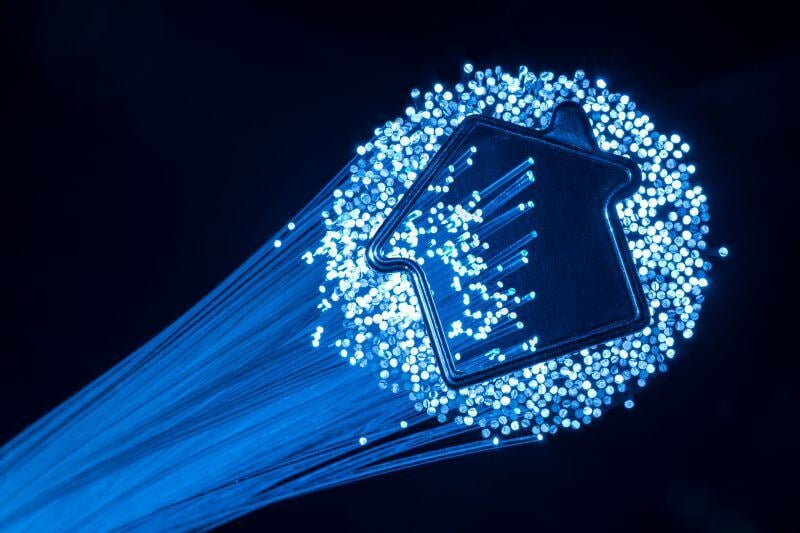From Speed to Innovation: Exploring New Technologies for Fiber Internet Providers
Fiber internet has become the gold standard for high-speed internet connectivity with its lightning-fast speeds and exceptional reliability. Unlike...

The role of fiber networks stands as a cornerstone of technological progress. As we navigate a world increasingly dependent on seamless communication and data exchange, understanding the intricate dynamics of these networks becomes imperative. This article delves into the pivotal significance of fiber network connectivity, unveiling its transformative potential for the future of global communication infrastructure.
A Leap in Fiber Optic Technology
The heart of modern connectivity lies in the innovation of bend-insensitive fibers. These remarkable advancements in fiber optic technology have revolutionized how we perceive and utilize communication networks. Bend-insensitive fibers are engineered to withstand tight curves without compromising data transmission quality. This breakthrough has paved the way for enhanced flexibility, making installation and maintenance more convenient. From urban environments to remote locations, the applications of bend-insensitive fibers in fiber outside plant networks are vast, propelling efficiency and performance to new heights.
Streamlining Fiber Deployment
The future of fiber networks is paved with automation. Automated deployment technologies are reshaping the landscape of installation processes. Robotic cable laying and trenching systems and drone-assisted aerial deployment techniques are drastically reducing installation time, lowering costs, and improving efficiency. The seamless integration of these technologies enhances the overall deployment process and ensures a higher level of precision and accuracy.
Enhancing Fiber Outside Plant Infrastructure
As fiber networks expands, reliable and sustainable power solutions become paramount. Power over Ethernet (PoE) solutions offer an innovative approach by combining data and power transmission over the same cable. Energy-efficient solutions further bolster remote powering capabilities, and the integration of renewable energy sources adds an eco-friendly dimension to the infrastructure. The advantages of integrated power solutions ripple across the network, fostering reliability and sustainability.

Impact of 5G on Fiber Networks
5G technology has created a seamless blend of fiber and high-speed wireless connectivity. The symbiotic relationship between 5G and fiber infrastructure is transforming the way we experience communication. With the exponential growth in data demand, fiber networks are primed to play a pivotal role in 5G backhaul and fronthaul deployments. This synergy ensures a robust, low-latency network that caters to the needs of the digital age.
Internet of Things (IoT) and Fiber Networks
The IoT revolution hinges on a backbone of robust and scalable connectivity. Fiber networks provide the bedrock for IoT’s expansion, seamlessly accommodating the influx of connected devices. However, this integration comes with its set of challenges and opportunities. Striking the right balance between scalability, security, and bandwidth remains a key consideration in the evolving IoT landscape.
Transforming Urban Infrastructure with Fiber
Smart cities are no longer a distant vision; they are becoming a reality thanks to the transformative power of fiber connectivity. These connected urban ecosystems rely heavily on fiber networks as their lifeline. The fiber applications in smart city initiatives are boundless, from smart traffic management to environmental monitoring. As cities evolve into centers of innovation and efficiency, fiber networks stands as the backbone driving this transformation.
The Role of Fiber Networks in Next-Generation Services
The canvas of future services is painted with high-speed internet, immersive multimedia, and cutting-edge technologies like AR, VR, and gaming. Fiber networks are at the forefront of delivering these services to consumers. Cloud computing and data center connectivity are seamlessly facilitated while the potential for AR and VR experiences reaches new heights. Future-proofing these networks is essential to cater to the dynamic demands of upcoming services.
Final Thoughts
The trajectory of connectivity’s evolution is intimately intertwined with these innovations. Bend-insensitive fibers, automated deployment methodologies, integrated power solutions, and the synergy with 5G, IoT, and smart cities are collectively scripting the subsequent chapter of connectivity. Adapting to these technological leaps and meeting consumer expectations is no longer an option; it’s a requisite for retaining relevance and ushering transformation in the digital epoch. The bridge between today and tomorrow is meticulously constructed with fiber, and its potentials are limitless.

Fiber internet has become the gold standard for high-speed internet connectivity with its lightning-fast speeds and exceptional reliability. Unlike...

Access to the internet has become an essential part of daily life; from education and healthcare to business and entertainment, the internet is a...

4 min read
The internet has become an essential part of our daily lives, powering our communication, work, entertainment, and much more. As the demand...